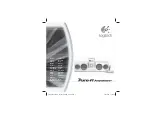
4
Residential Speaker Placement
Figure 4: Speaker Placement
MONO CONFIGURATION
1. Run a single direct burial type 2-conductor wire
from the amplifier’s location out to the furthest
speaker location, passing through each speaker
location along the way. Leave an extra 12-18” of
wire at each speaker location for making your
speaker connections.
Figure 5: Wire Connections
3. When both connections at the speaker are complete,
use a zip tie to manage the extra slack and provide
strain relief to the connection.
4. Place the speaker over the completed wire
connections.
5. Repeat steps 2 through 4 at each speaker location.
See the AMPLIFIER CONNECTIONS SECTION for
more detailed wiring diagrams.
ALTERNATING LEFT/RIGHT
STEREO CONFIGURATION
1. Run a single direct burial type 4-conductor wire
from the amplifier’s location out to the furthest
speaker location, passing through each speaker
location along the way. Leave an extra 12-18” of
wire at each speaker location for making your
speaker connections.
2. Using a radial cable stripper (Figure 6), prepare
the wires to be connected by stripping back the
outer jacket to expose the four individual wires
(Figure 7). Assuming the first speaker is designated
as the Left channel, cut the Left (+) and Left (-)
wires (typically white/green) (Figure 8). Combine
the positive (+) wires from the amplifier, the
speaker, and the line running to the next speaker.
Using the included silicone filled wire nuts, twist
the wires together ensuring that no copper is
exposed. Repeat the same process for the negative
(-) wires. The other two wires should be left intact,
as they will be used at the next speaker.
Figure 6: Cable Stripper
7” (178mm)
3” (76mm)
12” (305mm)
LOBBY
CONFERENCE
ROOMS
DINING
OFFICES
RECEPTION
EVENT CENTER
EVENT SPACE
Commerical Speaker Placement
Figure 3: Speaker Placement
2. Prepare the wires to be connected by stripping back
the insulation to expose approximately 1/2” of
copper. Combine the positive (+) wires from the
amplifier, the speaker, and the line running to the
next speaker. Using the included silicone filled wire
nuts, twist the wires together ensuring that no
copper is exposed (Figure 5). Repeat the same
process for the negative (-) wires.



























